Gen 3 pickleball paddle stands out because of its novel construction. Thermoforming technology enhances their performance. The unique core boosts power and offers better control. Gen 3 pickleball paddle is known for its superior spin capabilities.
Players who enjoy an aggressive style appreciate this build. Built to be tough and sturdy, these paddles are long-lasting.Each generation shows how paddle technology has adapted to meet the needs of players seeking better performance, more comfort, and improved gameplay.
Evolution of Pickleball Paddles Generations:
Gen 1 pickleball paddles:
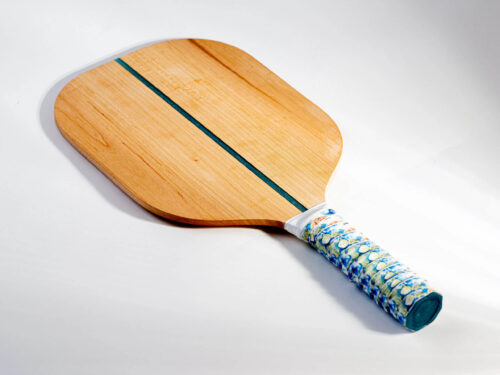
Gen 1 pickleball paddles mark the beginning of paddle generation; these were the original paddles made entirely from wood fiber in the early days. These wooden paddles were affordable, durable, and great for backyard games.
However, they had a serious drawback: they were heavy. These paddles weighed between 12 and 15 ounces and required substantial effort to generate power and retain agility.
Gen 1 paddles were ideal for players who relied more on muscle power than finesse for control and focused on muscle more than finesse for control and spin.
Gen 1.5 Paddles: The Lightened Wood Option:
There are some concerns about the weight of the Gen 1 pickleball paddle. Gen 1.5 paddles evolved within the first generation, with lighter wood layers that helped slightly reduce the swing weight while still providing durability. The lighter feel improved, but the control and power capabilities were still limited compared to modern paddles.
Gen 2 Pickleball Paddles:
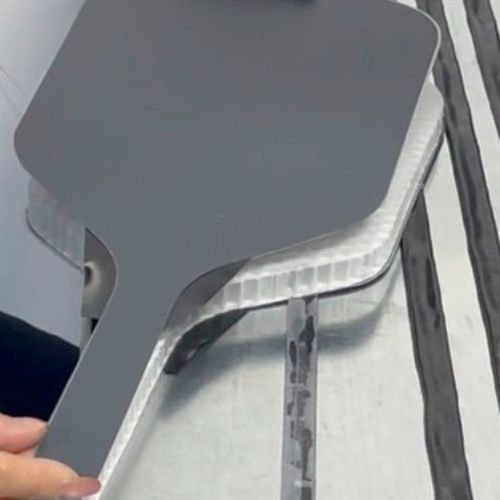
The second generation saw a significant leap forward in paddle technology.
Second-generation pickleball paddles moved away from solid wood and embraced composite materials like fiberglass. This era marked the introduction of thermoforming within paddle production.
These paddles often utilize thermoforming, where materials are heated and fused to create a stronger, more cohesive structure. Adding foam to the edges enhances stability, while carbon fiber layers boost power and accuracy.
These paddles generally weigh between 6 and 9 ounces, promoting easier handling and better ball command. If you’re an intermediate or advanced player seeking greater power and consistency, Gen 2 paddles might be your best bet.
They offer a balanced blend of control and power. This could be ideal if you’ve developed your skills and aim to advance further.
Composite paddles also started integrating honeycomb polymer cores.
This core technology significantly improved power and control while reducing the vibration players experienced during ball impact. Compared to Gen 1, Gen 2 paddles offered a larger sweet spot, which meant they were more forgiving for off-center hits and allowed for improved shot placement.
Gen 3 Pickleball Paddle: High-Tech Advances

Gen 3 pickleball paddles represent the current cutting-edge pickleball equipment.
The focus on advanced materials has taken paddles to new levels of precision and performance. Materials such as Toray carbon fiber, Kevlar, and advanced reactive honeycomb polymer cores have redefined what a paddle can do.
These paddles are built on Gen 2’s thermoforming technique but use varied foam densities to meet different performance metrics. Gen 3 paddles allow for a wide range of customization, including expanding power, improving comfort, and increasing control.
These materials provide an exceptionally lightweight feel while delivering explosive power on drives, making them effective for offensive and defensive play.
Understanding Thermoforming Technology:
Think about cooking with a new non-stick pan for the first time. It’s a significant change. That’s how it felt when I used a thermoformed paddle. The paddle shapes materials with heat and pressure, resulting in a durable and consistent paddle structure. This process allows for uniform distribution of material, reducing weak spots that could affect performance.
Improved Power and Responsiveness
Using a thermoformed paddle amazed me with its energy transfer. It was like the paddle became a part of my arm, converting all my effort into massive power on the court. It’s perfect if you enjoy playing aggressively.
Feature Benefit
Thermoforming Durable structure, improved material integrity
Energy Transfer Enhanced power during gameplay.
Gen 1 vs Gen 2 vs Gen 3: What Has Changed?
Here is a look at the differences across each generation of paddles:
Gen 1 Paddles: Thick wooden paddles known for lasting a long time, but they were difficult to handle, weren’t precise, and weren’t comfortable.
Gen 2 Paddles: These light paddles were made from composite materials with fiberglass. This gave players more control and power and gave them a sweeter spot.
Gen 3 Pickleball Paddle: Built with state-of-the-art materials such as Kevlar and carbon fiber, which provide the ideal mix of power, spin, and control.
Best Gen 3 Pickleball Paddle choice:
Here are some recommendations of Gen 3 Pickleball Paddle.
1. FRIDAY PICKLEBALL PADDLE GEN 3 FEVER
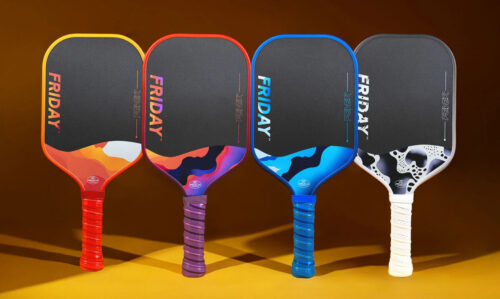
Friday has launched its most advanced model yet, the Friday Pickleball Paddle Gen 3 Fever.
Gen 3 Construction: Utilizes advanced materials and manufacturing techniques for a lightweight feel, explosive power, and enhanced spin710.
Balanced Performance: Designed as an all-court, power-leaning paddle that doesn’t sacrifice control or dwell time. It offers a short break-in period, after which performance ramps up even further.
Durability: Built to last, withstanding intensive play and high-velocity impacts without the issues that plagued earlier Gen 3 models.
Thermoformed carbon/Kevlar, advanced cores
Enhanced power, spin, and dwell time
Improved with new materials and techniques
2. FLIK Gen 3 Pickleball Paddle:
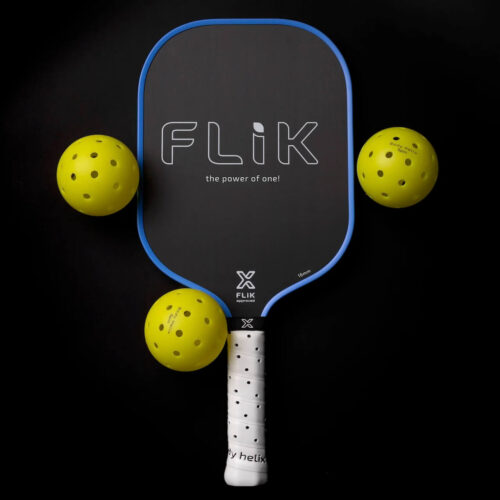
Precision-crafted for players who crave smooth control, effortless power, and a feel for the game like never before.
Gen 3 Construction
Floating Black X-Core PP
Solid Polyurethane Handle
Reduces vibration and shock transferred to your hand during play
100% Blue Kevlar
Provides more pop and durability
Ultra-Cushioned Grip
Reduces fatigue for extended play
3. Six Zero Double Black Diamond Control Gen 3 pickleball paddle:
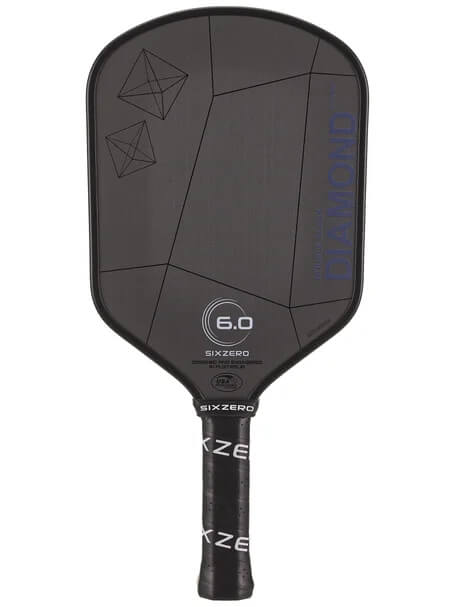
The Six Zero Double Black Diamond Control Gen 3 pickleball paddle offers a good mix of control and power. It’s built with a Japanese Toray 700K raw carbon fiber surface and a polypropylene core with a honeycomb design. This paddle comes in 14mm and 16mm core thicknesses, with the 16mm option providing enhanced control and the 14mm version generating more pop.
Here’s a look at the main specifications:
Length: 16.3″ / 413mm
Width: 7.5″ to 7.7″ / 192mm to 196mm
Handle Length: 5.5″ / 140mm
Grip Circumference: 4.125″ – 4.25″ / 104.5mm – 108mm
Grip Style: Perforated Leather
Edge Guard: 1/4″ extending over paddle face
Core:
Core Material: Honeycomb Polymer, Foam Edgewalls
Core Thickness: 0.63″ / 16mm OR 0.55″ / 14mm
Weight:
Average Weight: 8.1 ounces / 230gm +/- 10gm
Swing Weight: 113 (14mm), 114 (16mm)
Twist Weight: 6.8
Face:
Face Material: Japanese Toray 700K Raw Carbon
4. Helios3 – Gen3 Carbon Fiber 14mm Power Paddle:

DynamoCore Gen3 Core for Power: The Helios3 paddle is equipped with the revolutionary DynamoCore Gen3 core, designed to deliver explosive power on drives, counters, and speed-ups while maintaining a refined touch on resets, drops, and dinks.
Carbon Fiber for Grit and Durability: With a premium T700 Toray Raw Carbon Fiber face, the Helios3 balances Gen3 power with exceptional spin and precision, perfect for drops, resets, and drives on your way to the kitchen. Pairs great with our eraser to stay gritty and spinny much longer than Kevlar.
Streamlined Construction: Using an advanced thermoforming process, the paddle’s core and edges are sealed to expand the sweet spot and increase power, giving players a significant advantage on the court. We’ve optimized the amount of edge foam along the core’s perimeter to reduce core crush susceptibility.
Balanced Control: The elongated shape of the Helios3 provides an ideal balance between power and control, while the foam-injected edge and handle enhance stability and increase the sweet spot for improved ball control. It’s less head heavy than its Alecto3 predecessor, which helps in hand battles and swing weight.
USAP Pending: USAP approval pending
How To Choose The Right Paddle For Your Game?
Picking the right paddle largely depends on your playing style and experience level.
Beginners: Beginners benefit from Gen 2 or Gen 3 fiberglass paddles. These paddles are lightweight, easy to handle, and offer improved control. The Gaia paddle is an excellent option for new players, providing the perfect mix of affordability and quality.
Intermediate: Intermediate players should consider a carbon fiber or Kevlar paddle for enhanced power and finesse. These materials help add power while maintaining control, essential for improving accuracy.
Advanced: Advanced players often opt for paddles like the Helios Athos, combining Kevlar strength, advanced core construction, and edge guard protection to enhance the overall playing experience.
Conclusion:
Gen 3 brought changes that improved the playing experience, whether it be in terms of power, control, or durability. If you’re looking to invest in a paddle or are just curious about the sport’s history, it’s essential to understand generational shifts. After all, the paddle is not just a piece of equipment; it’s an emblem of a player’s passion for the game.
FAQs:
Q: What are the best alternatives to Gen 3 paddles?
Paddletek and Engage paddles offer similar power and play characteristics.
Q: Should I use eye protection with powerful paddles?
Yes, using eye protection is crucial.
Q: Do more expensive pickleball paddles make a difference?
It’s true that not all pickleball paddles are created equal. Higher-end paddles often feature advanced materials like carbon fiber, raw carbon, and fiberglass, which can provide more control, power, or spin. However, you don’t necessarily need the priciest paddle to perform well on the court.
Q: Are Friday paddles suitable for players of all skill levels?
Yes,Friday paddles cater to a wide range of skill levels. The Friday Paddle is perfect for casual players and weekend warriors seeking a budget-friendly yet performance-oriented option, as well as more advanced players who demand the best from their equipment.